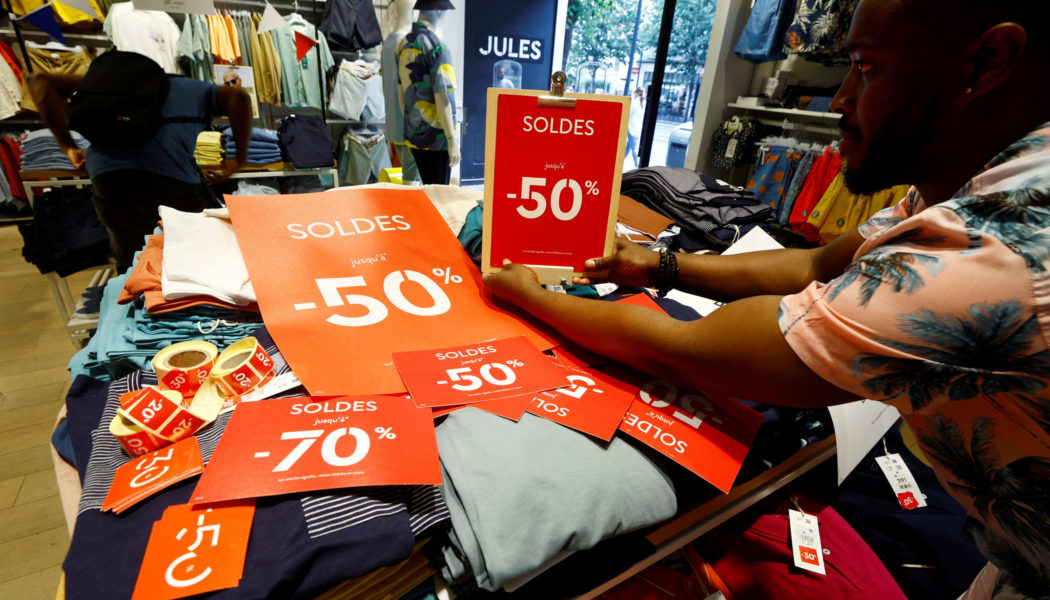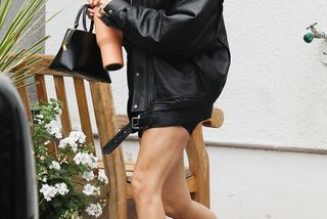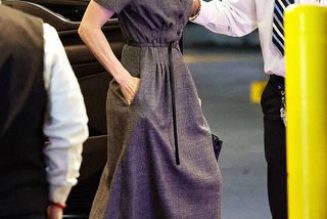August 2 – Look at just about any major brand and you’ll find a commitment to move away from the make-take-waste linear economy that has defined fashion for the past 100 years and embrace a circular economy in which fashion is produced sustainably, made to last longer and repaired or recycled after use.
That’s an ambitious goal for an industry notorious for its waste. The statistics are alarming: production has doubled over the past 15 years while the amount of time clothing is worn has dropped 40%. Yet at the end of life, less than 1% of clothing is recycled. Every second a truckload of garments goes into either landfill or incineration, while tons of waste clothing also ends up dumped in countries like Ghana, Pakistan and Kenya, where they constitute an environmental hazard.
“Today’s fashion system is fundamentally broken. We take resources from the ground to make products that are used for a short amount of time and ultimately, they’re just thrown away,” said Chloe Anderson, programme manager for the Ellen MacArthur Foundation Fashion Initiative. “We’ve never produced more clothes and we’ve never worn our clothes less.”
The circular economy is guided by three principles: to eliminate waste and pollution, to keep products and materials in circulation, and to repair and regenerate nature. For fashion, that translates into products made to last from sustainably sourced materials, supply chains that use lower-impact production processes and integrate repair, reuse and recycling, and customers engaged in the circular journey.
The climate crisis has added urgency to the effort. Initiatives such as The Fashion Pact, a chief executive-led coalition of 60 companies in the fashion and textile industry, and Fashion for Good, a coalition of brands, producers, retailers, suppliers, non-profits, innovators and funders, have made circularity a cornerstone of addressing the industry’s outsized environmental impacts. The clothing and footwear industry is responsible for up to 10% of greenhouse gas emissions, more than shipping and international flights combined.
There is also a strong business case. By 2030, 23% of the global fashion market could be made up from circular business models, valued at up to $700 billion, EMF estimates.
A clothes sale in Nice, France. Production of clothes has doubled in the last 15 years, but worn for 40% less time. REUTERS/Eric Gaillard
Today, resale, rental, repair and remaking are worth more than $73 billion, or 3.5% of the market, and growing fast. This includes fast-fashion firms like H&M, which aims to be 100% circular by 2030, and Inditex, owner of Zara and the world’s third largest retailer. Inditex shared new targets in July, including that all its textile products will use more sustainably sourced fibres by 2030. Luxury brands like Ralph Lauren and Coach are part of the trend, too, alongside pioneers such as Patagonia and North Face.
The circular initiatives are laudable but are they sufficient to shift the industry and consumers away from disposable fashion and scale from 3.5% of the market to 23% by 2030?
Consulting firm Kearney, which has been tracking circular fashion for the past three years, finds that brands are not moving fast enough, with the average brand scoring below three on a scale of one to 10 when it came to circular apparel, both in their own actions and in the important task of educating consumers to demand sustainably produced fashion.
For example, a survey of consumers in Italy, France and the U.S. found that almost half could not say whether virgin materials were better or worse than recycled, and 30%-40% weren’t aware they could return clothes for recycling.
At the same time, there is little interest in turning off the production tap. Inditex, for example, placed 621,244 tonnes of garments on the market last year, according to its 2022 annual report, 10% more than in 2021.
And Inditex is far from alone. The just-released Fashion Transparency Index 2023, an annual review of 250 of the world’s largest fashion brands and retailers, ranked on a host of sustainability parameters, found that 12% of brands won’t even reveal annual production volumes, and only two brands, Armani and United Colours of Benetton, disclose a commitment to reduce the number of new items they produce.
A stream contaminated with chemical discharge from Mexico’s denim industry. REUTERS/Jennifer Szymaszek
“Take-back schemes, rental and other new business models are as effective as blocking a dam with a bandage unless issues of over-production and over-consumption are addressed at the root,” the Fashion Transparency report said.
Yet the potential of circular fashion innovation is evident from the Ellen MacArthur Foundation’s Jeans Redesign programme, which targets a fashion staple that has outsized negative environmental and human rights impacts. These include use of forced labour impacts, pollution of local waterways from the dyeing process and huge use of water and pesticides, in some of the most water-scarce parts of the world.
In 2019, more than 100 fashion brands, garment mills and manufacturers signed onto guidelines to design and construct jeans based on circular economy principles. In the latest report, 70% of participants had designed 1.5 million jeans meeting the guidelines, with one in nine brands redesigning at least 40% of their jeans portfolio. More than a third of the companies applied the principles to other garments, including jackets, shirts, bags and hats.
The Jeans Redesign programme “is an entry point into this massive complex system that is the fashion system as we know it today”, Anderson said. “The participants have proved that redesigning jeans fit for a circular economy is possible.”
Netherlands-based MUD Jeans, an early participant, has a vision to become “the world’s first circular denim brand”. Its jeans are made from 40% recycled denim and 60% organic cotton and can be bought or leased. Customers can return the product when the denim is worn out, and MUD repairs the jeans or recycles them.
“For us, circularity starts with design,” said Lea Landsberg, sustainability manager for MUD Jeans. “But what happens to the product once it’s no longer worn is also important. Waste is only waste when it’s wasted. The materials that went into the jeans can be reused again, and that’s how we close the circle.”
Bert van Son, founder of MUD Jeans, which uses 40% recycled denim to make jeans that can be leased and returned. MUD Jeans/Handout via Reuters
MUD jeans pioneered its lease-a-jeans model in 2013. But today several brands have upwards of 40% post-consumer material in their jeans, including French luxury brand Chloé, Levi’s and Triarchy, Anderson says.
Yet the industry’s dependence on blending natural fibres like cotton or wool with synthetic fibres like polyester and polyamide (nylon) presents a significant challenge in recovering and reusing textiles.
“Boosting recycling is key to reduce the impact of our raw materials on nature,” an Inditex spokesman said. “However, today’s recycling technology is considerably constrained by both the fibres that can be recycled and the quality of the resulting fibre. Blends of different raw materials pose one of the biggest challenges for existing recycling systems as they cannot be shredded and turned into new fibres.”
It has taken an equity stake in U.S.-based firm Circ, which has developed a technology to recycle ubiquitous polycotton using hydrothermal processing, and in April released a collection of clothing made with 50% recycled polycotton textile waste and polyester garments with 43% recycled polycotton textile waste.
Another area where there has been progress is in the number of companies repairing and recirculating garments to keep them in use longer.
Sometimes called recommerce, short for “reverse commerce”, this approach is being led by firms such as Vinted, the largest online international customer-to-customer marketplace in Europe dedicated to second-hand fashion. Using technology from carbon software firm Vaayu, Vinted showed that net carbon emissions avoided by the Vinted marketplace in 2021 were 453 kilotonnes of carbon dioxide equivalent (CO2e), the same emissions as flying between London and Los Angeles and back approximately 275,000 times.
Nike’s Re-Creation programme collects local vintage and deadstock pieces and materials and uses them to create new, locally designed and manufactured products. Zara Pre-Owned enables repair services, peer-to-peer sales and donation. Meanwhile, H&M offers direct online resell, reselling with partners like Reflaunt and ThredUp and purchases in second-hand markets like Sellpy.
There is also innovation in tackling the problem of unsold inventory. One in 10 items are never sold, remain in warehouses and eventually end up in landfills. End-of-season fashion platform Otrium has introduced data-made fashion, giving fashion brands an online outlet channel and the digital tools to connect their end-of-season collections with fashionistas.
A customer looks at clothes on display in a second hand-clothes importer store. REUTERS/Bernadett Szabo
According to ThredUp, resale models are growing up to 10 times faster than the traditional fashion market. In 2022, 88 brands launched resale programmes, and more than two in three retailers offering resale say it’s integral to their long-term growth strategy.
But circular models still represent a tiny proportion of companies overall revenue, even for those that have been leading the way. For example, Patagonia’s Worn Wear, a programme to keep its products in circulation, accounts for only $5 million of its $1.5 billion revenue business annually.
The World Business Council for Sustainable Development cites a number of challenges facing the industry in trying to go from niche to scale on circularity, including “misaligned goals and incentives, fragmented supply chains and few examples of profitable circular business models at scale”.
In June it launched the CTI (Circular Transitions Indicators) Fashion Initiative, a scheme to develop industry-harmonised standards, metrics and best practices to accelerate adoption of circular business models, with sector guidance to be published by the end of the year.
There is also a big push coming from regulators. The European Union (EU) Textiles Strategy would require all textile products placed on the EU market by 2030 to be durable, repairable and recyclable, and to a great extent made of recycled fibres, free of hazardous substances and produced in respect of social rights and the environment.
California’s proposed Responsible Textile Recovery Act would require producers to establish a stewardship programme for collection and recycling of textiles. And in Australia, the Seamless project is advancing a voluntary national product stewardship scheme.
“The good news is that this is a market that’s ripe for legislation, and we’re starting to see that happen,” said Valerie Boiten, senior policy officer for the Ellen MacArthur Foundation. “This is going to create a level playing field for brands to take the key steps needed for circularity.”









